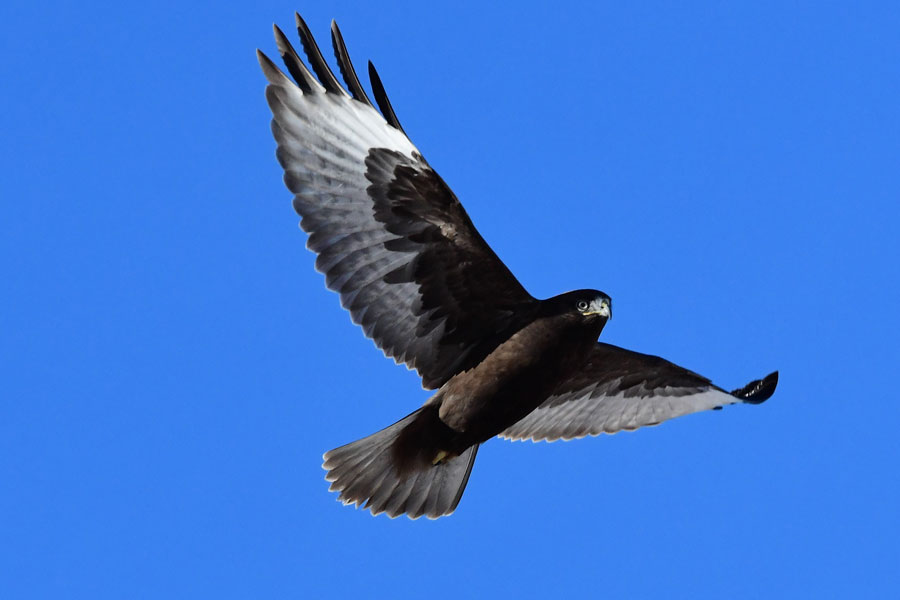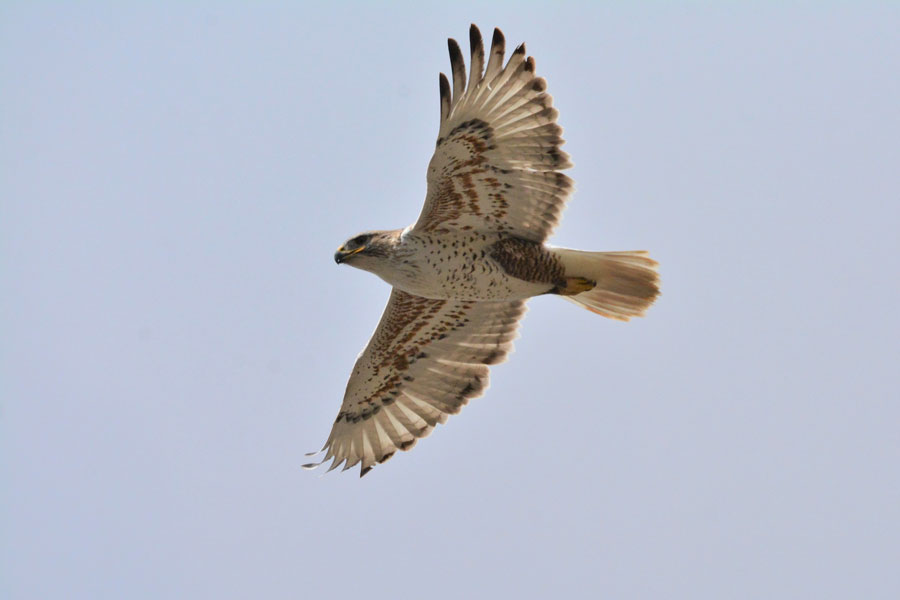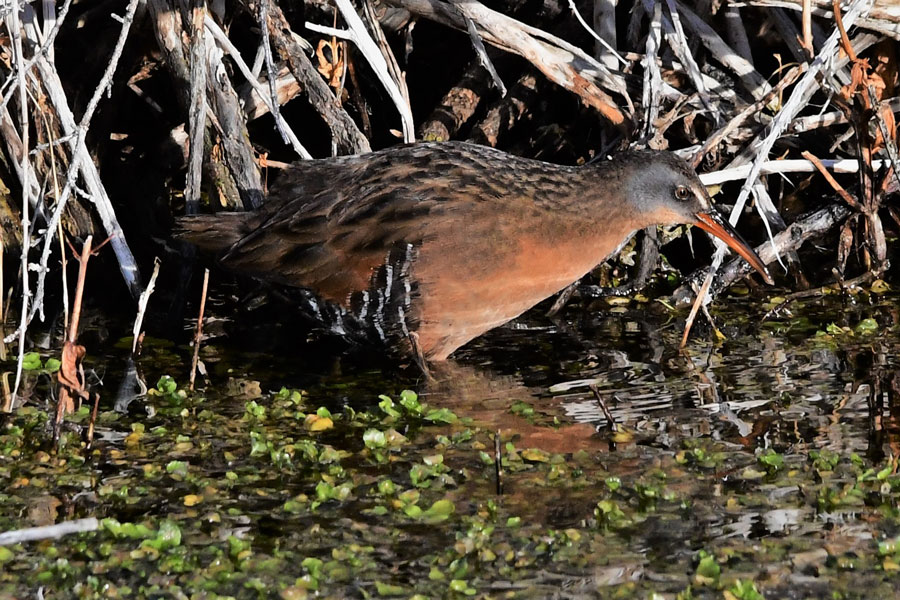Catching glimpses of elusive raptors during annual bird count
Published at
As I approached three trees along a canal north of Howe, seven hawks flew out in the bitter cold breeze, circled over a snow-covered field and made their way back to trees for protection from the windchill. Four were Rough-legged hawks, one was a Red-tailed, another was a beautiful Ferruginous and the final one; a stunning black and white hawk.
“Has to be a Harlan’s,” I thought as it flew by. A Harlan’s is a dark morph of the Red-tailed that is regarded by some birders as a separate specie. As the hawk landed, I noticed that it had feathers on its legs meaning that it was not a type of the Red-tailed, but had to be a Rough-legged or a Ferruginous. I reported it as a Rough-legged on the tally sheet on the Howe Christmas Bird Count.
Even though we mainly have three species of large hawks that winter in Southeastern Idaho, the different morphs or phases of those hawks can make them very different to identify. So, when I got home I sent multiple pictures of that black and white bird to Darren Clark, as excellent birder and a renowned bird expert. The next day I received an email from him.

“Actually, I believe it’s a dark morph Ferruginous. The yellow gape (the yellow mouth parts of the hawk) extends back pretty far (below the eye). Nice bird. I saw a couple the last time I was out there.” I had not even considered looking at the mouth area – just its coloring.
Seven birders from the Snake River Audubon Society of Eastern Idaho met in Howe on December 28, to make the Christmas Bird Count. We identified 47 species including Bald and Golden eagles, Virginia rails, Prairie falcons and two Blue jays. The most numerous birds were 2114 House sparrows that live mostly on cattle feed lots along with other foreign invasive birds like European starlings and Eurasian collared-doves. “The crappy birds that poop on all our feed,” according to one of the workers at a feed lot. But the birds that draw me to this count are the birds of prey.

The Howe area is known for the numbers of raptors wintering there and in the 117 Rough-leggeds we observed both light and dark morphs among them. We also counted seven Golden eagles, two Bald eagles, nine Northern Harriers, a Cooper’s hawk, 13 Ferruginous, five American kestrels, three Merlins, 18 Prairie falcons, a Barn and two Great-horned owls.
Other than the rare dark morph Ferruginous I had other memorable experiences on the day of the count. One was my trip to Warm Spring where I observed and photographed four Virginia rails as they picked snails and other aquatic bugs off the watercress in the warm water. I celebrated the time alone as I toasted the remembrance of a year ago when I went there for my last trip with a great friend.
Another highlight was watching the birds of prey as they harassed and chased the pigeons, doves and sparrows near the cattle feed yards. Parking close to those chases, allowed me to get detailed shots of the feather patterns of the predatory birds.
During the Great Backyard Bird Count on February 12-15, I will make another trip to the Howe area to watch the raptors and see if I can also find the dark phase Ferruginous hawk, and/or even a light phase one.

Living the Wild Life is brought to you by The Healing Sanctuary.


